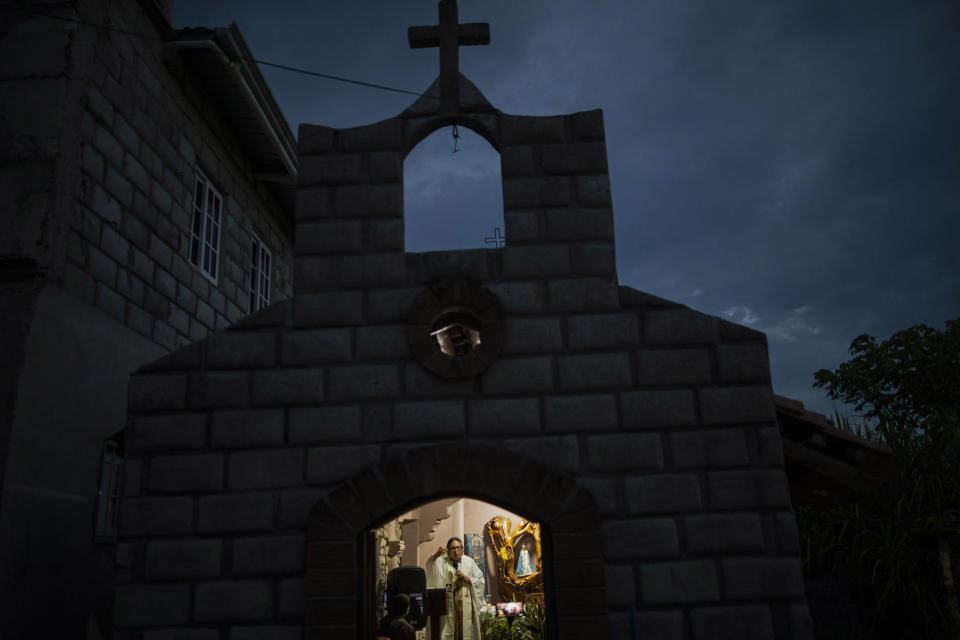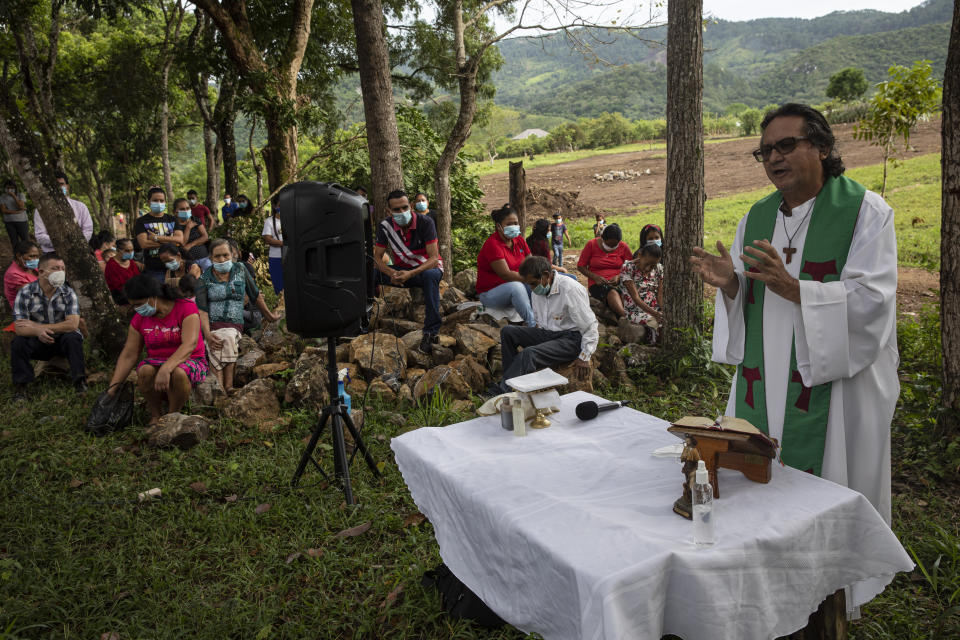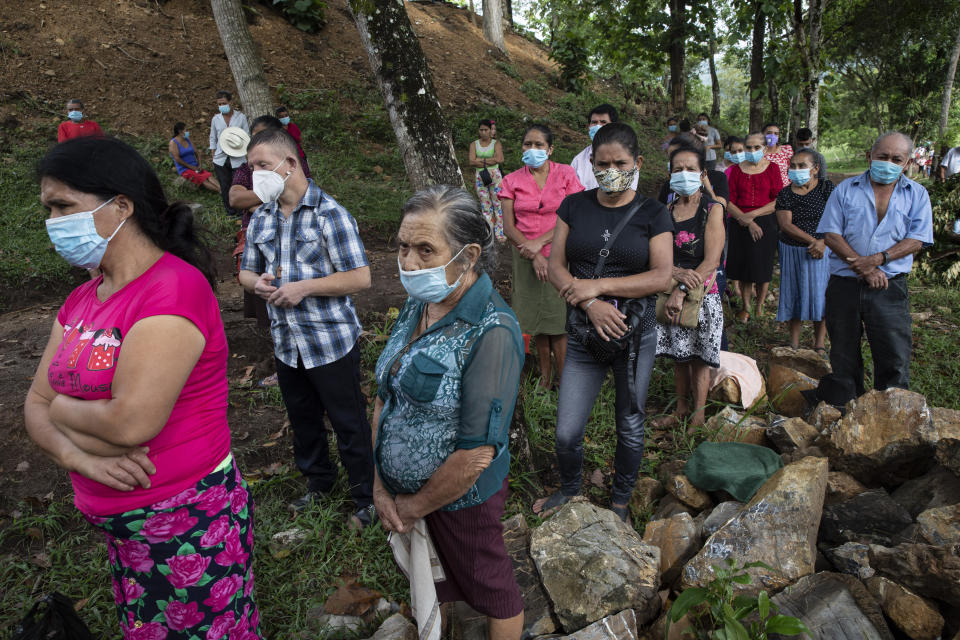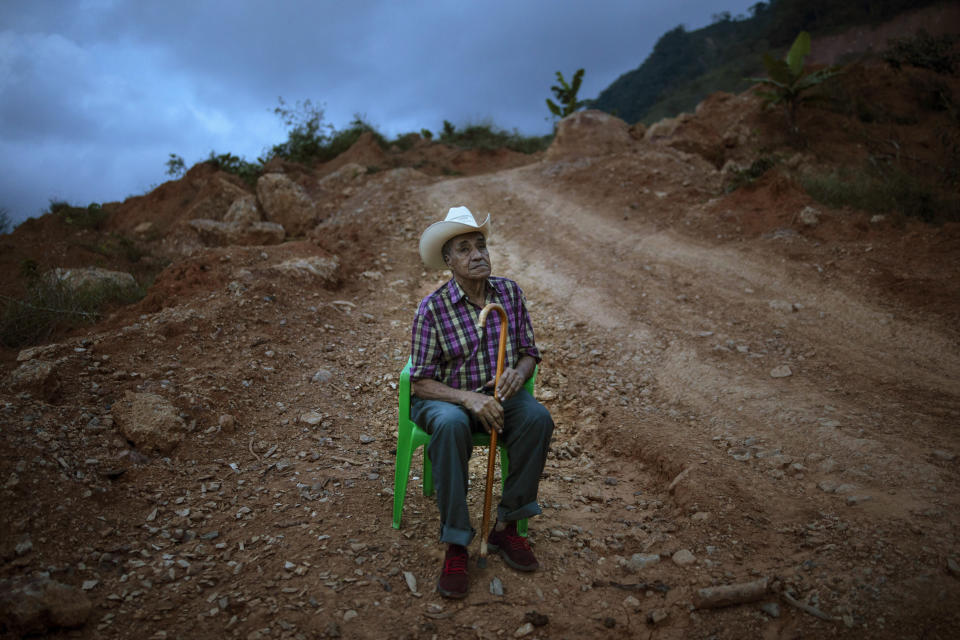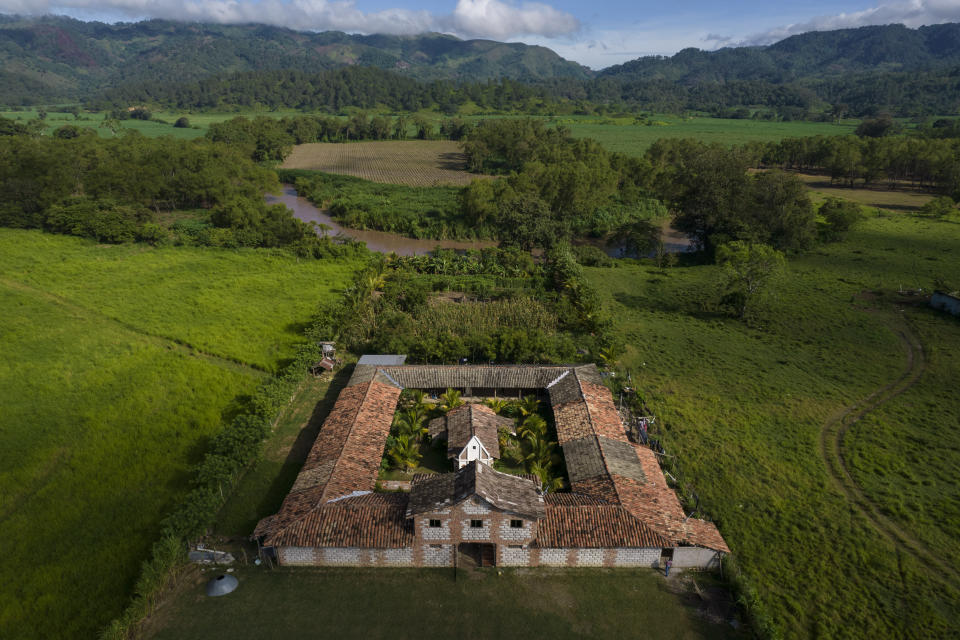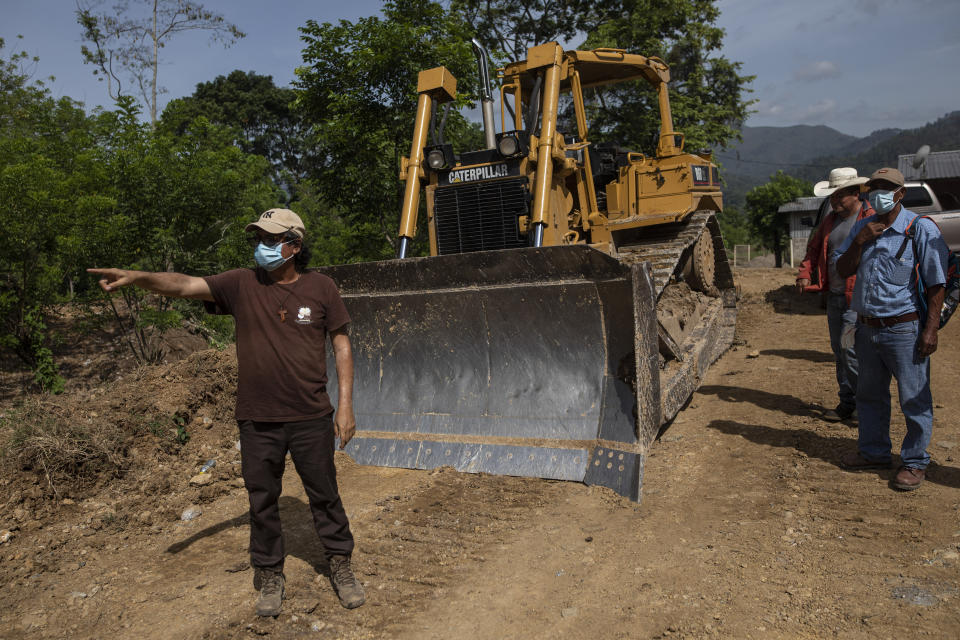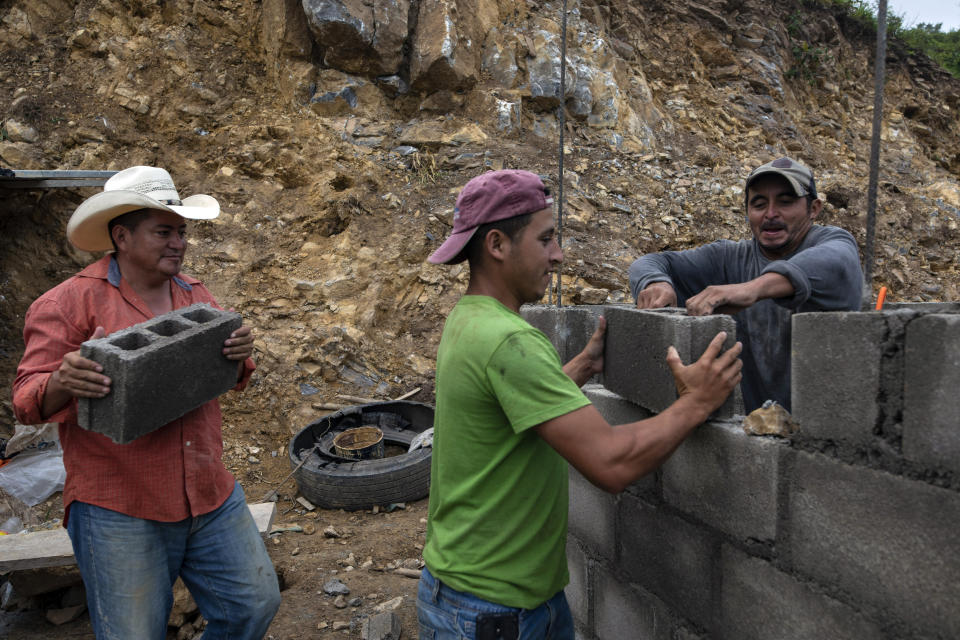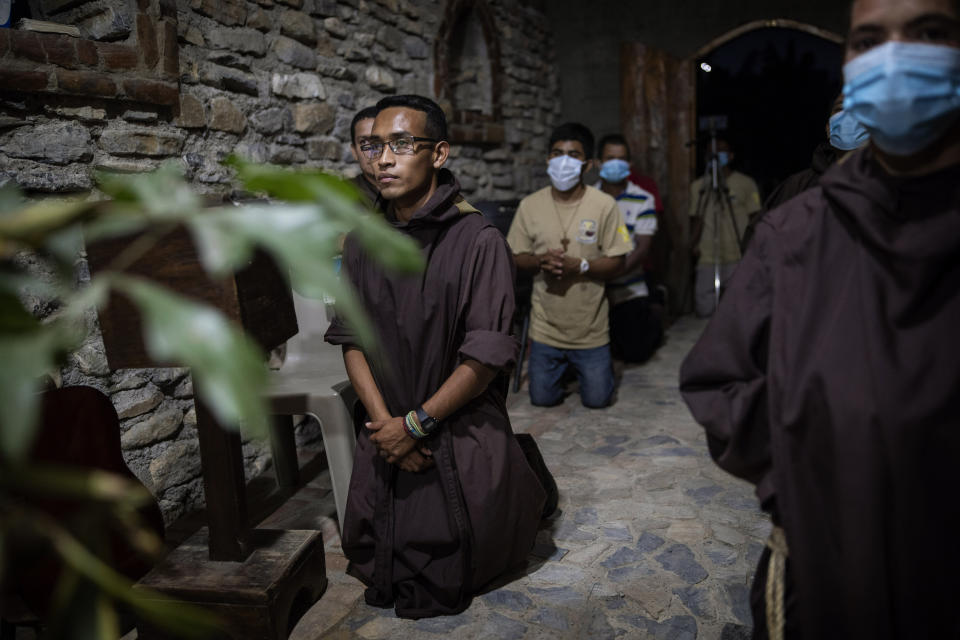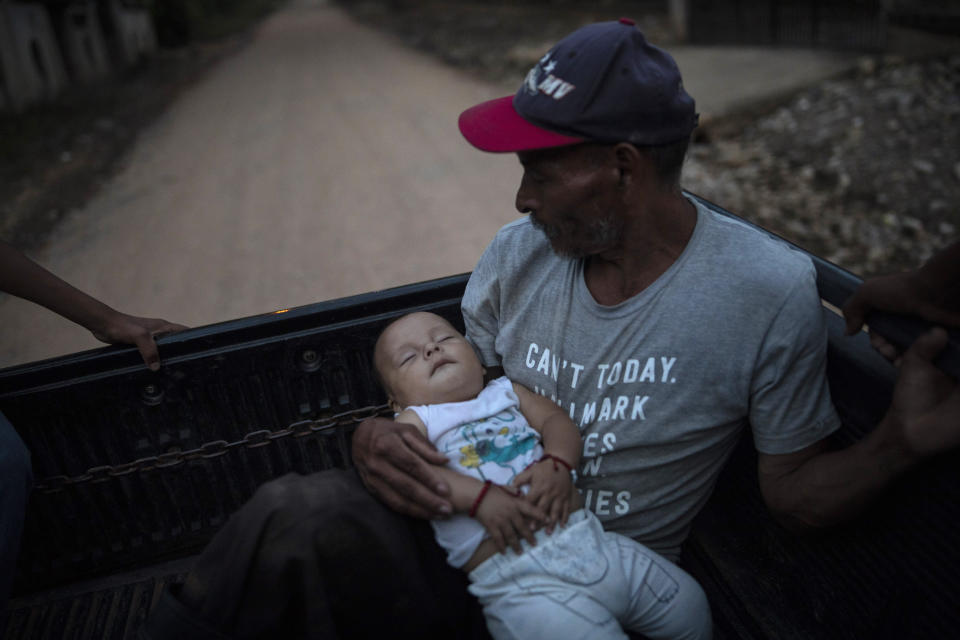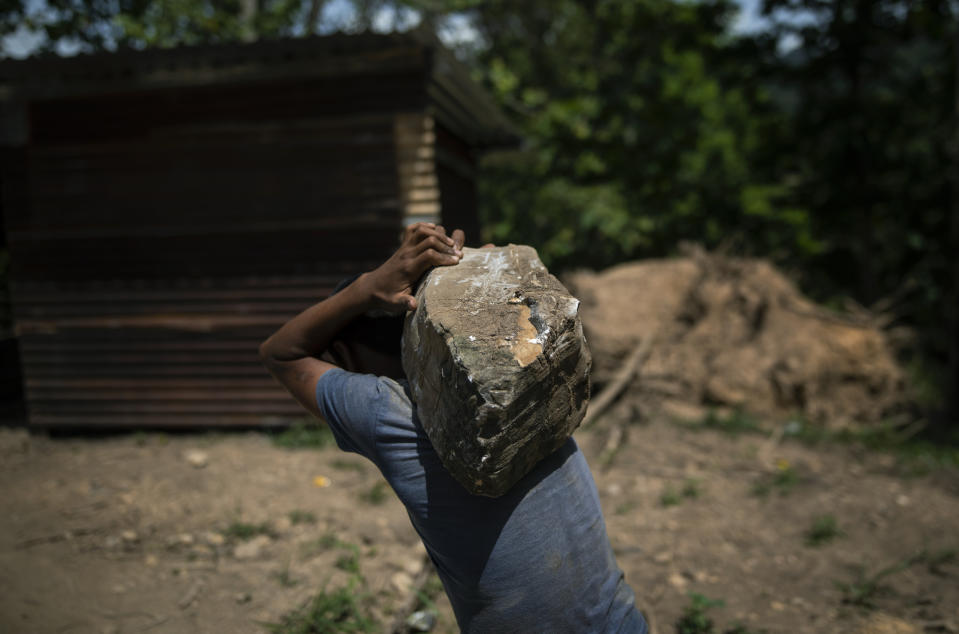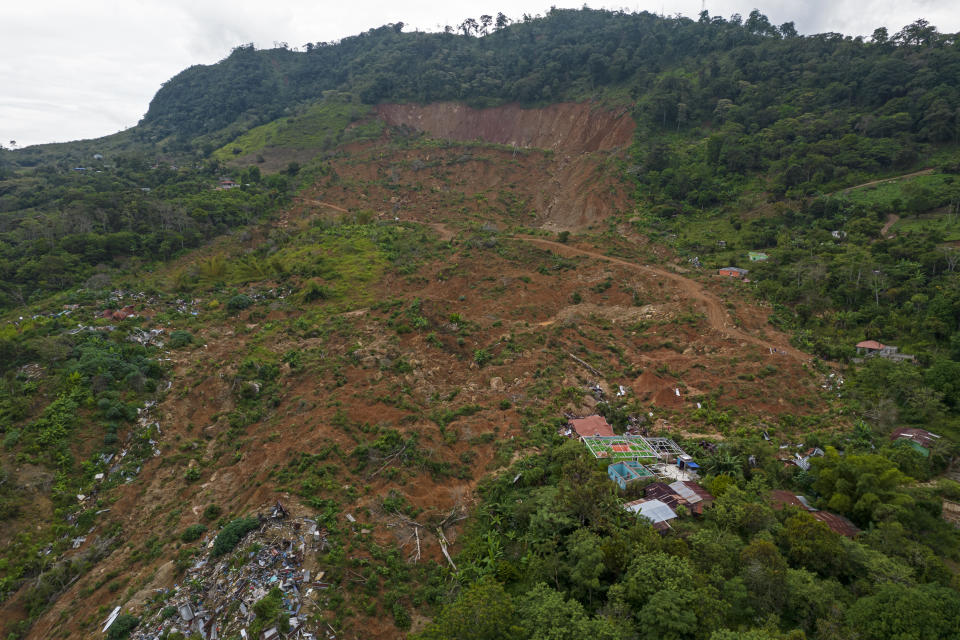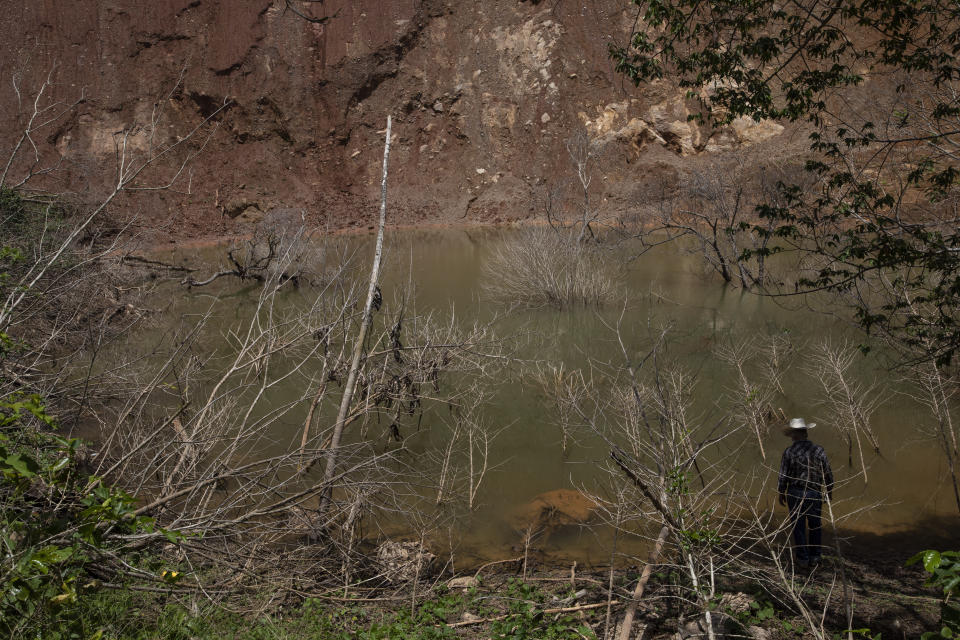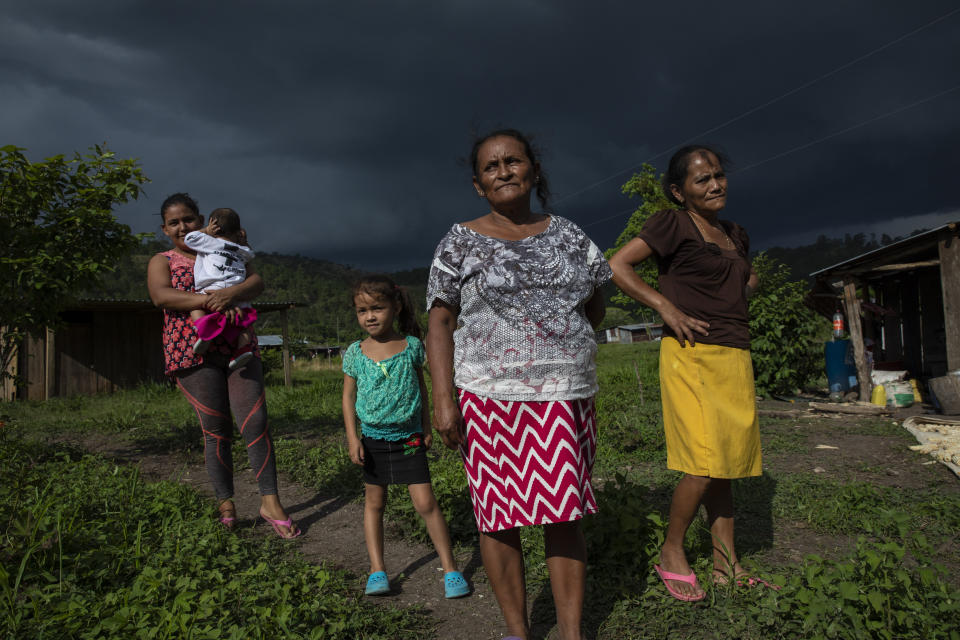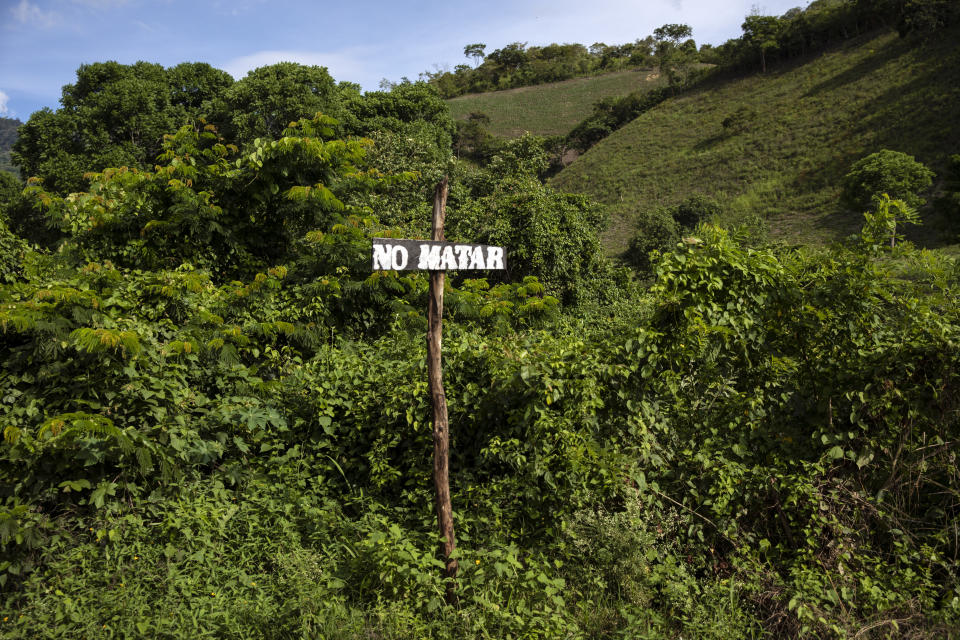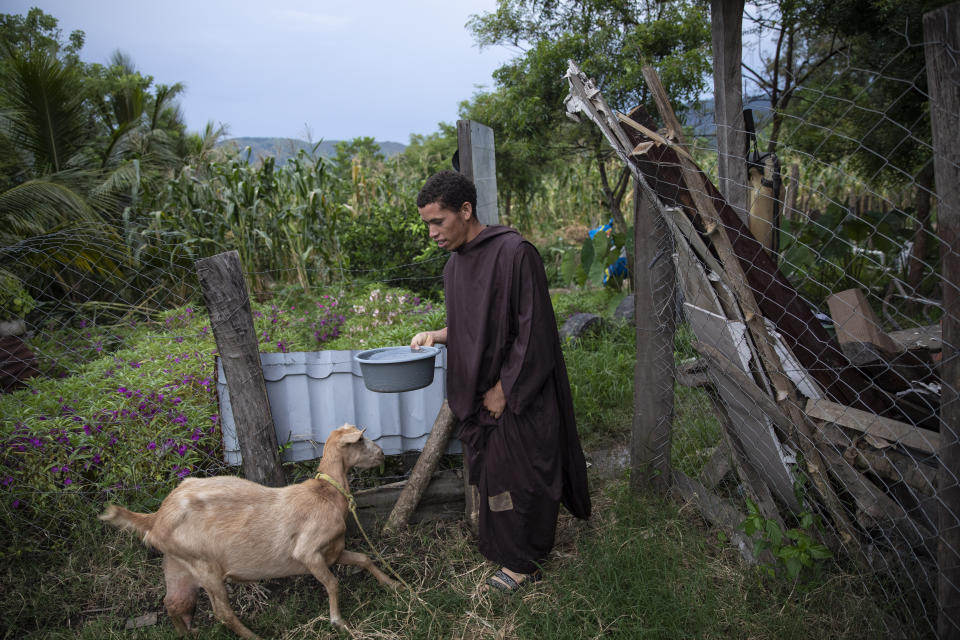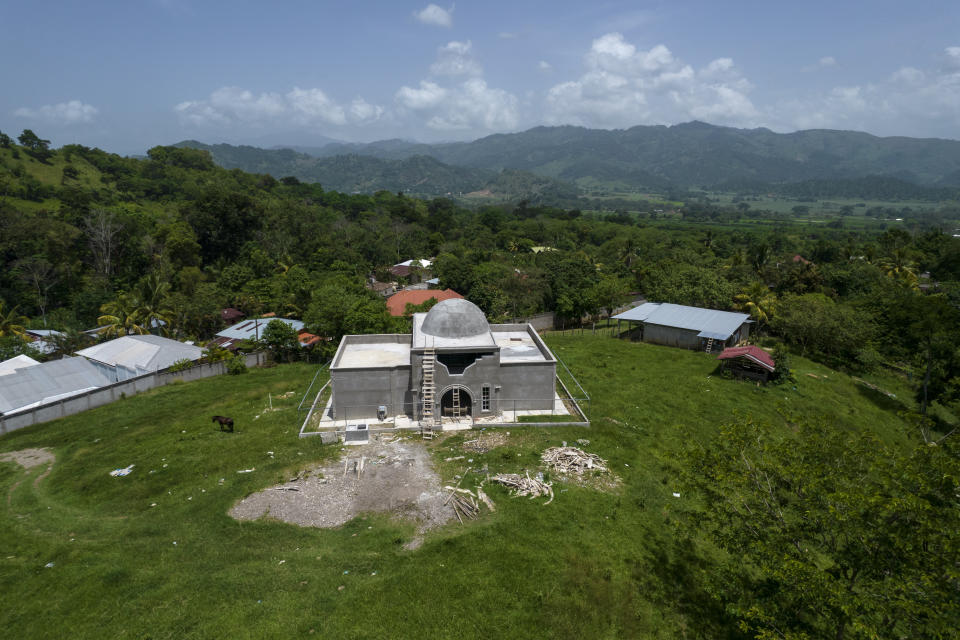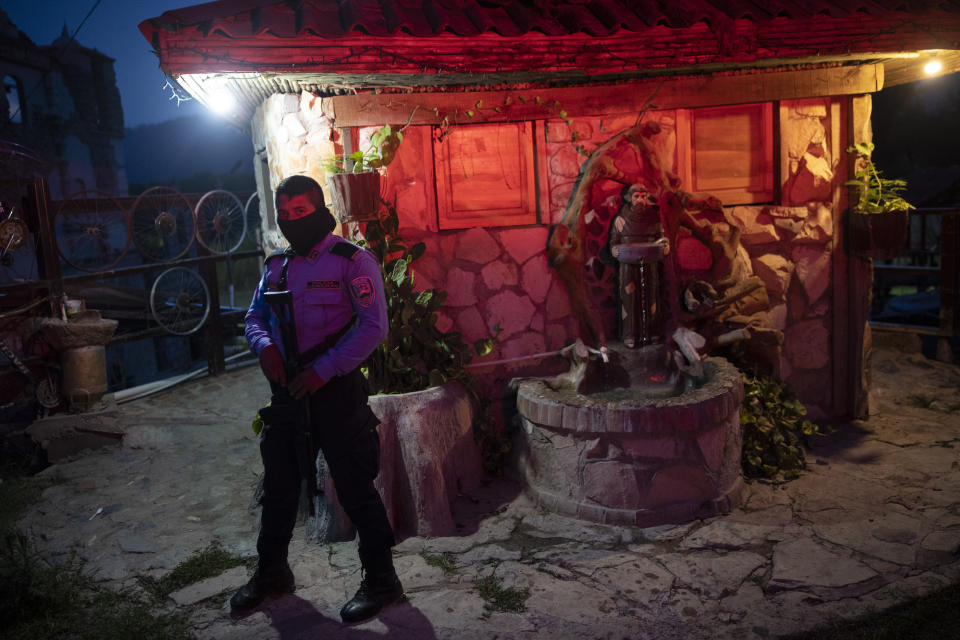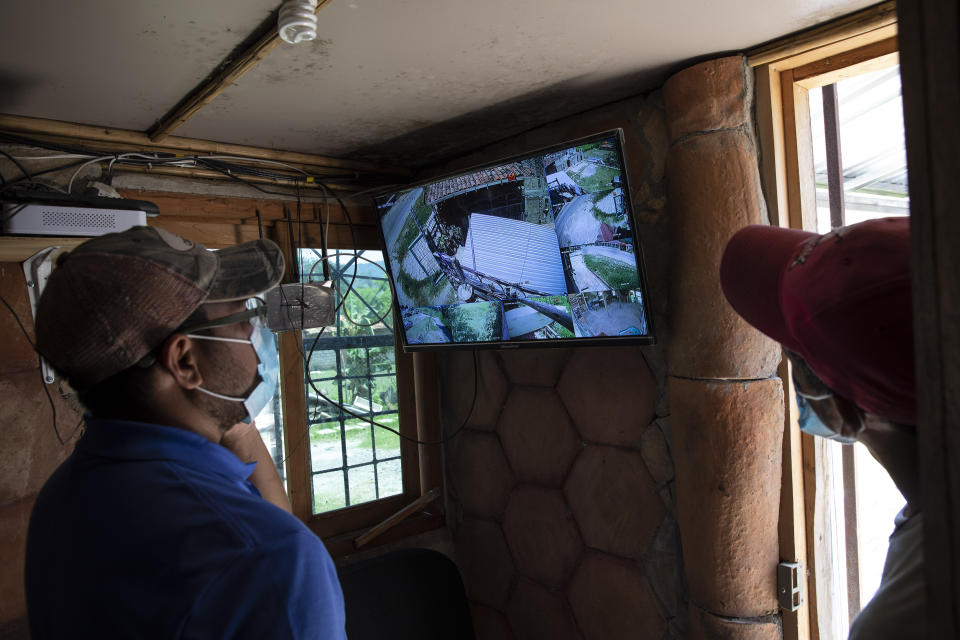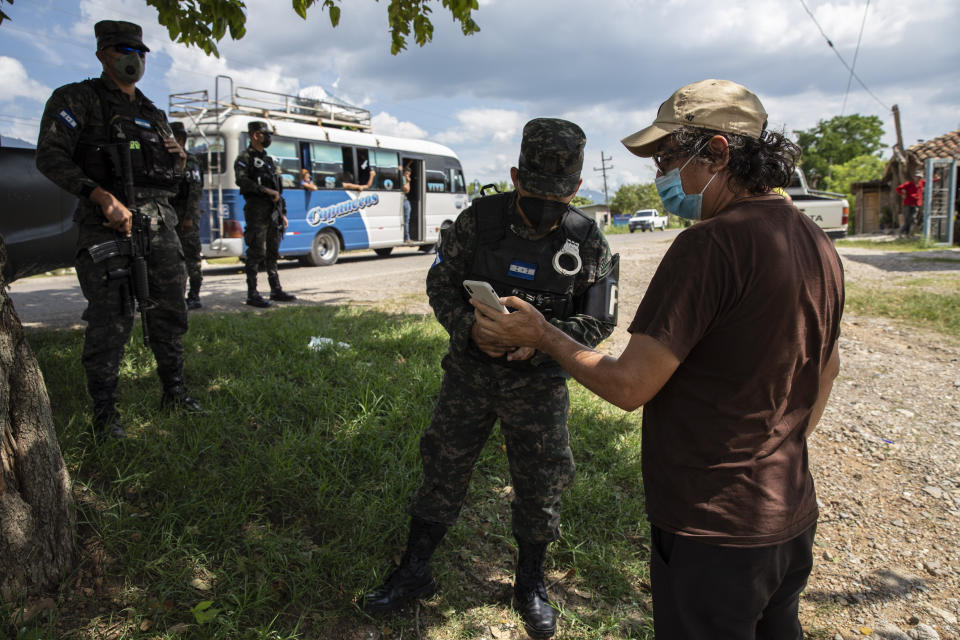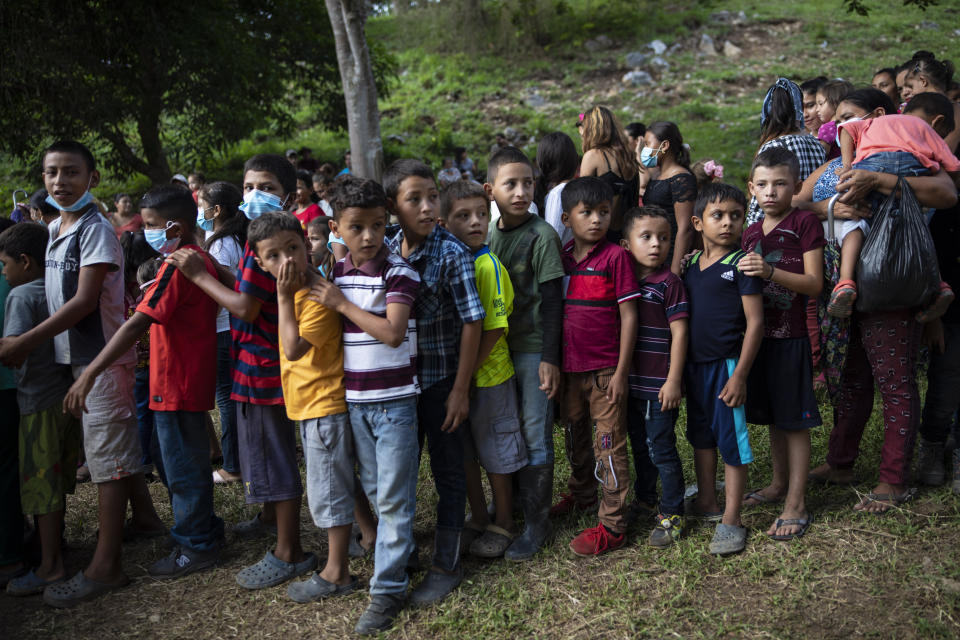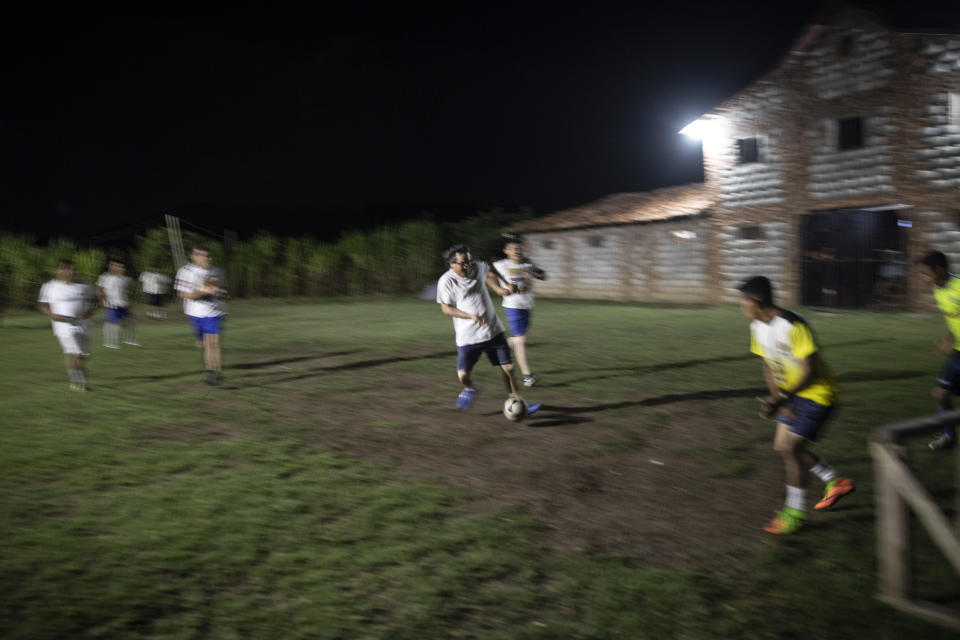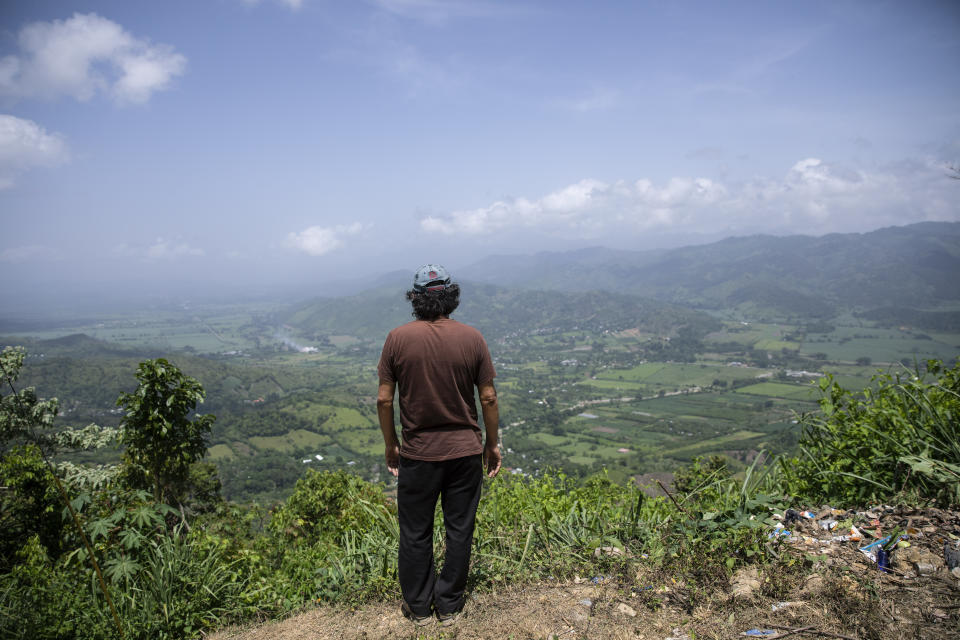After mudslide, priest builds a new town on narco land
MISSION SAN FRANCISCO DE ASIS, Honduras (AP) — First came Hurricane Eta. Then, Hurricane Iota, unleashing rains of biblical proportions on the hillside community of La Reina.
As Iota hammered La Reina for four days, residents kept watch on the mountain above their 300 homes for signs that they should flee. Some left quickly when the downpour ceased. Ivan Varela resisted, hoping to protect the seven houses he and his brothers had built over the years with money they earned in the United States.
On the last night, as his parents prayed, Varela shot his pistol into the air to scare off thieves stalking the properties of those who already had evacuated. But soon he realized the battle was lost. Water was gushing out of the ground and the earth was starting to tremble. He called his brother in Florida.
“The town is going to disappear. We are losing everything,” Varela said.
“The important thing is that you survive,” his brother responded. “Leave!”
___
This story is part of a series, After the Deluge, produced with support from the Pulitzer Center on Crisis Reporting.
___
Varela hid his tools in the hopes he would be able to recover them one day. He released his farm animals and the family dog and joined the exodus.
By nightfall, La Reina was gone, buried in an epic mudslide, its families among nearly half a million Central Americans displaced by the hurricanes. Bathed in tears and shaking with cold, the frightened and disoriented residents of La Reina wandered the main road at the bottom of the valley looking for help.
That’s when the Rev. Leopoldo Serrano arrived in his Franciscan robes like an answer to their prayers, ready to take charge -- and ready, it would turn out, to make a deal with the devil to save the people of La Reina.
Serrano, a friar who ran a nearby drug rehabilitation center, understood they would have to act quickly if they were to keep families intact and the community from disintegrating. Something had to be done for the more than 1,000 people stranded in a valley marked by the poverty and drug violence that have driven so many Hondurans to the United States.
As often happens in Latin America, the priest stepped into the void.
“I don’t want people to go to the United States. Families are broken, the suffering is immense,” Serrano said. “Rebuilding the community helps to stop migration”.
Serrano turned schools into shelters, looked for borrowed houses and organized a census of victims. He made hundreds of phone calls looking for help. Bags of food, clothes and medicine trickled in from relatives and churches abroad, but “the Honduran government did not even give us a tent,” Serrano said.
In any case, they would need more than tents. To rebuild their houses and replant their crops, the villagers needed land -- and Serrano knew that much of that land was in the hands of drug traffickers.
So, the agent of God became a broker with agents of the underworld, many of whom were fighting each other for control of the land and lucrative drug routes from South America to Mexico and the United States. The pastor of souls turned into a project manager and construction foreman for the families of La Reina, building them a new town at Mission San Francisco de Asís.
“If we had to wait for the government to act, it could take forever, it may never happen and these people would be forced to leave,” Serrano said. “Eight months later, they haven’t built a house.”
___
This was a ravaged land long before Hurricanes Eta and Iota washed away La Reina in November 2020 -- the first time in recorded history that successive Category 4 and 5 Atlantic hurricanes slammed the same place.
It was a slow-moving devastation. Ivan Ríos, 70, remembers how deer used to eat grass in front of their houses when he was a boy. Back then, they planted coffee without cutting the trees in keeping with Mayan teaching passed down through generations that severed roots rotted in tropical soil and would no longer hold it to the slopes.
But the cedar and cinnamon trees high in the surrounding mountains were as valuable as coffee, and outsiders started cutting the trees. Those who complained -- “whoever had a long tongue” --were killed, Ríos said.
Residents of La Reina soon followed suit, cutting more trees to expand their coffee plantations and get timber to build their homes. The population grew and land prices rose. Husbands and sons began heading north about 20 years ago, so that today about 15% of the population of La Reina lives in the United States, most of them sending money back to buy land and houses.
As the trees came down and houses went up, climate change increased the rainfall in La Reina. Eta and Iota each dumped six times the average annual rainfall on the area.
There is an old tale that grandparents here tell: A snake living in a mountain cavern drinks rainwater. It grows and grows and grows until it is too large for the cave, and the mountain cracks open -- unleashing a flood.
No snake was responsible for what happened in La Reina. When the Earth gave way, humans were at fault.
___
Serrano arrived here in 2009, after spiritual missions in New York and the Mosquitia region of Honduras. He found himself in a cursed and disputed land where violent drug traffickers ruled with impunity. In the area around his first house, corpses appeared hanging from trees.
Located on the border of the departments of Santa Barbara and Copan, his sprawling mission straddles the road that is one of the main drug trafficking corridors in the region. It starts in San Pedro Sula, on the Caribbean coast, where drugs from Venezuela and Colombia arrive in Central America, and ends at the border with Guatemala, en route to Mexico and the United States.
In between, it winds through a tropical green valley full of sugar cane, beneath the mountains that produce the best coffee in Honduras; dozens of little roads spread out like capillaries to Guatemala.
These routes have long been used by convoys belonging to varios capos, the local mafia run by the Valle family and other cartels run by Alexander Ardón and Tony Hernández -- the brother of President Juan Orlando Hernández. All of the leaders have been arrested, extradited, convicted and imprisoned in the United States since 2014, and now there is a battle for succession.
Serrano surveyed the landscape from a lookout over the valley. “Half of all the land and businesses you see from here belong to drug traffickers,” he said.
Since moving to the mission, Serrano has preached the Bible, organized protest marches against violence, negotiated drug-free events such as soccer matches, and promoted religious celebrations and social work.
Serrano built the rehab center for addicts in 2014 on land that was donated to him from a person related to illicit activities, he said. “I tell drug traffickers to convert to the faith, to use the money earned by destroying lives to rebuild them ... Drug addicts are used as a money-making machine by drug traffickers. Let them convert, repent and ask for forgiveness.”
He convinced at least one young man to join his crusade, 21-year-old Oveniel Garcia, a recovered addict once close to the traffickers who would turn out to be key to their pursuit of land for the residents of La Reina.
But Serrano’s message is not widely popular. He has sought protection for his mission, which is routinely observed by men passing by in oversized SUVs with tinted windows. Honduran police and military units also stop by several times a week, and Serrano’s complaints to the prosecutor’s office led to the installation of surveillance systems.
“They tell me that they are going to finish me off, one by one, killing the Franciscan brothers working with me,” said Serrano, who is in poor health after heart surgery.
Several of the Franciscan friars living in the rehabilitation center are visibly traumatized by the threats. A year ago, Brother Santos, who used to go out to pray on the road, was kidnapped, beaten, doused with gasoline and subjected to a simulated hanging. He still is not able to talk about it.
But that has not deterred Serrano, who disparages the narcos and the government in equal measure. The people of La Reina needed help, and he didn’t trust Honduran officials to do the job. He knew what had to be done.
___
Twenty-five years ago, the powerful local cartel run by Arnulfo Valle bought the 70 acres adjacent to the mission where Father Serrano hopes to put those displaced from La Reina.
When capos are arrested, the government confiscates whatever land is in their name and holds it in a byzantine bureaucracy. Heirs fight for control over hidden assets -- land that has been put in the name of front men and women, sometimes without their knowledge. “The land itself is not worth that much, but the message of who is in control is everything,” Serrano explains.
Two weeks after the disaster, Serrano was publicly asking for land donations during Masses he broadcasts on Facebook. The way he tells it, Arnulfo Valle’s son, José Luis, contacted him and they arranged for a legal donation.
“My responsibility was only to legalize the situation. I hired a lawyer to identify the legal owner and we got them to donate it to the National Agrarian Institute,” which in turn would give houses and lots to La Reina’s people and common areas to the mission, Serrano said.
But the story is a little more complicated than that. It all turned on an intermediary with Jose Luis Valle: the young friar, Oveniel Garcia.
Garcia, who ran away from home at the age of 12 and became a drug addict, is a street-smart survivor. At 16, he got a job cleaning floors in a discotheque frequented by traffickers, where he met Jose Luis Valle.
“Bodyguards, women, weapons, drugs,” he recalls. “That same day I already knew who he was. The connection was immediate ... He paid the owner of the place so that I could dedicate myself only to him.” They would spend many nights talking.
The closer they became the more Garcia learned about the Valle family business. He resisted Valle’s request to work for him, but eventually found himself carrying a weapon. He was well aware that almost no one gets out of the drug business alive, and he was scared.
He had heard Serrano’s call to drug traffickers to turn from evil to good, and he reached out. “The only way they could believe that I really wanted to disassociate myself and was not going to betray them was through a conversion,” he explains. “Otherwise they would have killed me.”
Garcia left Valle’s orbit and entered Serrano’s rehab center for seven months. Over the next few years, he became Serrano’s right-hand man in the mission. He largely kept his distance from Valle until December 2020.
It was then that Serrano told Garcia, “We need land. Call your friend.”
Valle agreed to give them the land, but he didn’t have the titles. “He had to put pressure on those who occupied it, they were usurpers. He would go there with weapons. There were deaths,” Garcia recounted, cryptically.
The signing and official transfer of the land took place on the last day of the year. On May 7, the first measurements were taken to mark out plots for houses.
And on May 28, the new inhabitants entered the farm to find narco squatters still occupying part of the land.
To evict them, men from La Reina moved in, armed only with machetes. Ivan Varela was among them. They moved the squatters’ cattle out to the main road and, bit by bit, took possession of the land where they planned to build their new houses as part of the mission.
“We know that the father has put his life at risk for us,” Varela said. “One reaches a limit where one cannot lose any more. We have lost everything, even fear.”
___
Then, the government got involved -- or at least it said it was getting involved.
Honduran President Juan Orlando Hernández visited the area in February, promising that his government would build “2,500 houses, a whole new town on a piece of land confiscated from traffickers.” Construction companies had been hired, and they’d start in May, he said.
That wasn’t quite accurate. “The president speaks three or four times a day in different places about different topics,” explained Ramon Lara, minister of the National Agrarian Institute. “His advisors do not (always) give him good information.”
He said there was no need for that many homes for the residents of La Reina, and some ensuing delays were due to the violence in the area.
May passed. At the end of June, seven months after the hurricanes, dozens of townspeople put on their best donated clothes to attend a ceremony with officials of the Project Coordination Unit of the government of Honduras. They’d come to open the envelopes containing the bids from companies seeking to build the houses at San Francisco de Asís Mission.
Now they promised to build in 100 days -- which would be in mid-October, the middle of the next hurricane season.
Serrano was skeptical and remains so. After Mass the previous day, he had warned the community to be wary: “In Honduras we live a daily storm more damaging than hurricanes, the storm of corruption. The authorities deceive us with false promises. That is why I tell you that I still have doubts about the construction of these houses.”
At the ceremony, Serrano opened the blue folding chair he often carries with him and sat at a distance.
He watched as officials handed out donated used toys to hundreds of children. Raul Raudales, project director sent by the government, thanked Serrano for his leadership and said the project would never have launched without him.
“He obtained the land and has guaranteed the order of the process” Raudales said. “Without him, without his pressure, without his daily phone calls, without his presence, this would take twice as long to happen, at least.”
He asked Serrano to say a few words or bless the ceremony. The priest declined.
___
Each morning now, Serrano goes out to inspect the mission construction sites. A few men and women from La Reina have already begun to build three new homes and a group of apartments for widows with funds donated by churches. He checks on the type of stone they are using, takes measurements and coordinates the crews.
The workers put up windows, lay bricks and make cement. Each family must send one person to work on the construction of their home. They do not receive wages and if they don’t work, they must pay into a kitty about $6 a day (150 lempiras.)
A road is being built from the mission that goes directly up to the arable land on the mountain. “They neither want to nor should they stop being farmers,” Father Serrano explains.
Despite his efforts, two dozen residents of La Reina have left for the United States; the number of Hondurans caught crossing the border into the U.S. was 180,000 in the first five months of this year, up more than 600% from the same period in 2020. Others would like to go but can’t afford the $12,000 price tag that coyotes are charging for the illegal journey across borders. They no longer have houses and land to put up as collateral.
Ivan Varela, who is camped out at his parents’ house, is debating what to do. He spent eight years working two and three jobs a day in West Palm Beach, Florida, to earn the $16,000 he needed to build a house in La Reina and buy a bit of land to process his family’s coffee beans.
“What I earned in eight years was lost in one night,” Varela said.
One thing’s for sure, he said. If he goes again, this time he will take his 2-year-old son, and this time he will plan to stay for good.
Another La Reina resident, Obdulio Girón, said at the government ceremony that the only reason he has not left for the United States with his 7-year-old son is because he trusts that Serrano will get funds to build the houses.
But if this project fails, he said, he will have no choice.
Serrano and Garcia are determined to succeed.
The man who provided the land, Garcia’s friend José Luis Valle, died in what Serrano and Garcia suggest was a suicide. “He did things knowing it would get him killed,” Serrano explained. “In the history of the promised land there have always been wars.”
Garcia says he is prepared to dedicate his life to service, starting with helping the people of La Reina and is hoping to be ordained soon.
“The father has made me a servant of God,” Garcia said. “I have discovered that there is good, that I can help others to live in justice.”
Serrano, meanwhile, soldiers on -- raising money, advocating construction over migration, training the next generation of priests. He preaches good farming over evil drug trafficking.
He shared a WhatsApp message from an army coroner who urged him to be cautious: “Don’t keep talking about these people, Father, they will hurt you.”
Serrano was defiant. “They have weapons,” he replied, “if they wanted to kill me they would have done it already.”
And even his death would not stop the new town that was rising at Mission San Francisco de Asís, he insisted.
The friars he is training “can continue my work when I die.”

 Yahoo Finance
Yahoo Finance 